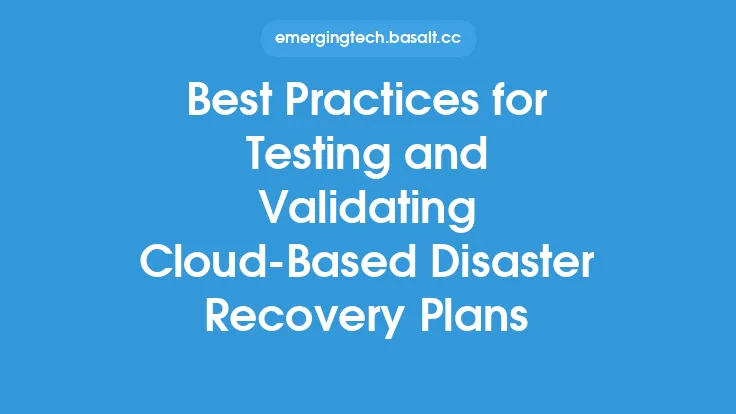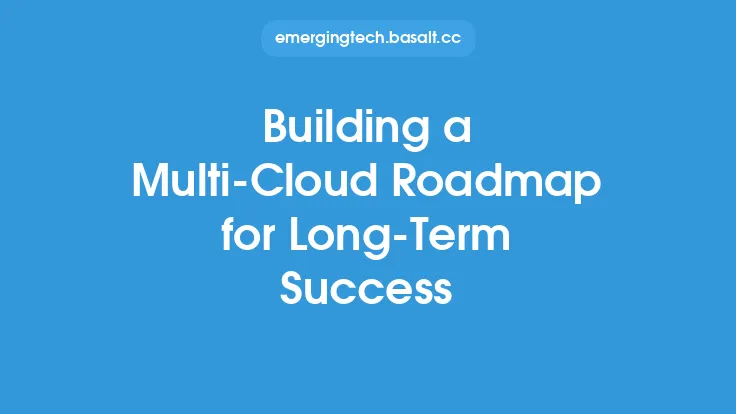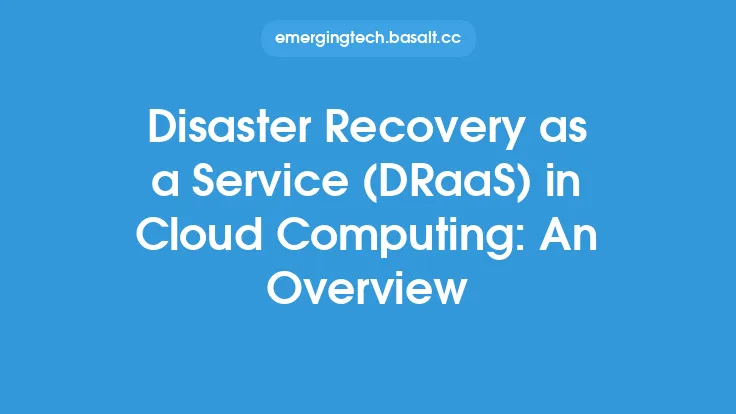Building a resilient cloud infrastructure is crucial for disaster recovery, as it enables businesses to quickly recover from disruptions and minimize downtime. A well-designed cloud infrastructure can help ensure that critical applications and data are always available, even in the face of unexpected events such as natural disasters, cyberattacks, or hardware failures. In this article, we will explore the key considerations and best practices for building a resilient cloud infrastructure for disaster recovery.
Introduction to Cloud Infrastructure Resiliency
Cloud infrastructure resiliency refers to the ability of a cloud-based system to withstand and recover from disruptions, while minimizing the impact on business operations. A resilient cloud infrastructure is designed to be highly available, scalable, and fault-tolerant, with built-in redundancy and failover capabilities. This is achieved through a combination of hardware, software, and network components, as well as careful planning and design.
Key Components of a Resilient Cloud Infrastructure
A resilient cloud infrastructure consists of several key components, including:
- Highly available storage: This refers to storage systems that are designed to be always-on and always-accessible, with built-in redundancy and failover capabilities. Examples include redundant arrays of independent disks (RAID) and storage area networks (SANs).
- Scalable computing resources: This refers to the ability to quickly scale up or down to meet changing business needs, while minimizing downtime and disruption. Examples include cloud-based virtual machines and containerization.
- Fault-tolerant networking: This refers to network architectures that are designed to be highly available and resilient, with built-in redundancy and failover capabilities. Examples include redundant network paths and load balancing.
- Disaster recovery as a service (DRaaS): This refers to cloud-based services that provide automated disaster recovery capabilities, including data replication, backup, and restore.
Designing a Resilient Cloud Infrastructure
Designing a resilient cloud infrastructure requires careful planning and consideration of several key factors, including:
- Business requirements: This refers to the specific needs and requirements of the business, including uptime, scalability, and performance.
- Risk assessment: This refers to the identification and assessment of potential risks and threats, including natural disasters, cyberattacks, and hardware failures.
- Cloud service provider selection: This refers to the selection of a cloud service provider that meets the business requirements and risk assessment, including factors such as uptime, scalability, and security.
- Architecture design: This refers to the design of the cloud infrastructure architecture, including the selection of hardware, software, and network components.
Implementing a Resilient Cloud Infrastructure
Implementing a resilient cloud infrastructure requires careful planning and execution, including:
- Hardware and software selection: This refers to the selection of hardware and software components that meet the business requirements and risk assessment, including factors such as uptime, scalability, and security.
- Network configuration: This refers to the configuration of the network architecture, including the selection of redundant network paths and load balancing.
- Data replication and backup: This refers to the implementation of data replication and backup processes, including the selection of data storage and backup solutions.
- Testing and validation: This refers to the testing and validation of the cloud infrastructure, including the simulation of disaster scenarios and the verification of recovery processes.
Best Practices for Building a Resilient Cloud Infrastructure
Best practices for building a resilient cloud infrastructure include:
- Regular maintenance and updates: This refers to the regular maintenance and updates of hardware, software, and network components, including the application of security patches and updates.
- Monitoring and logging: This refers to the monitoring and logging of cloud infrastructure performance, including the tracking of uptime, scalability, and security.
- Disaster recovery planning: This refers to the development of a disaster recovery plan, including the identification of potential risks and threats, and the implementation of recovery processes.
- Training and awareness: This refers to the training and awareness of IT staff and stakeholders, including the education on cloud infrastructure resiliency and disaster recovery best practices.
Conclusion
Building a resilient cloud infrastructure is critical for disaster recovery, as it enables businesses to quickly recover from disruptions and minimize downtime. By understanding the key components of a resilient cloud infrastructure, designing and implementing a resilient cloud infrastructure, and following best practices, businesses can ensure that their cloud-based systems are always available, scalable, and secure. Whether you are a business leader, IT professional, or cloud service provider, this article has provided you with the knowledge and insights needed to build a resilient cloud infrastructure for disaster recovery.





